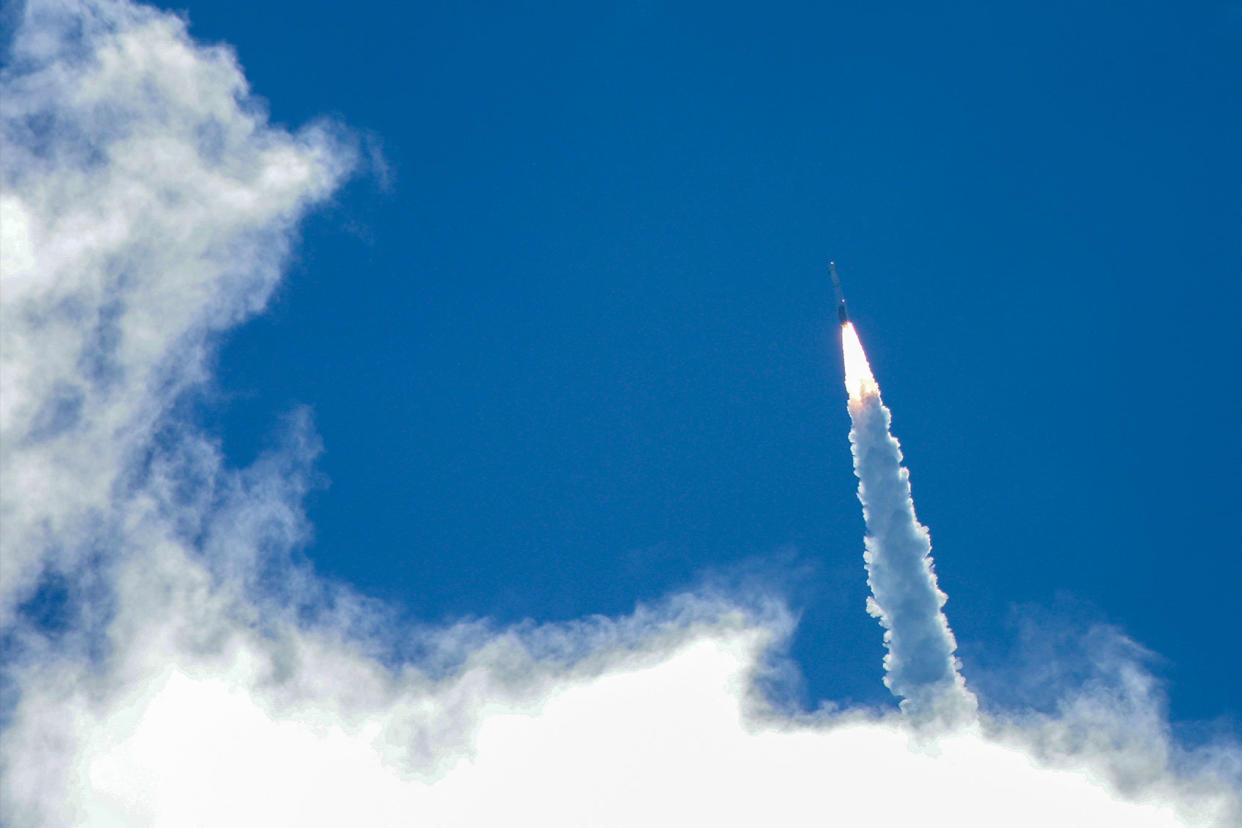Here's what happened when Boeing Starliner reached the ISS, narrowly averting crisis

After overcoming the mid-flight malfunctions of Boeing's commercial spacecraft, NASA astronauts Suni Williams and Butch Wilmore finally reached the safety of the International Space Station on Thursday. A decade in the making, Cape Canaveral's Wednesday launch was Boeing's third attempt after aborting two prior launches, due in part to helium leaks in the service module of its Starliner-series capsule, named Calypso by Williams. Though deft handling and scientific precision prevailed, the astronauts were beset by further helium leaks throughout the flight, including one known pre-launch and three discovered after their capsule was already in orbit.
The earth had held on tight to Calypso. Even strapped to the Atlas V's combined 90,250 pounds of rocket fuel, the Starliner capsule fought hard to break away — firing up its own thrusters in a final burn in order to stabilize its elliptical orbit. Free from gravity, Williams and Wilmore were just about to get some shut eye when mission control piped up.
"Looks like we picked up a couple more helium leaks," NASA said from the ground. "Butch, I'm sorry. We're still getting the story together."
"We're ready," said Wilmore. "Give it to us."
Back on the clock with a quickness, the two veteran astronauts got to work stoppering two culprit valves spotted by the hawk-eyed public scientists below. Leaks sealed, Boeing chimed in to tell NASA its astronauts were "safe to fly."
Just as the astronauts were finally in reach of the station, a ship-saving belay came from NASA engineers watching over the capsule: something was wrong, five of Starliner's 28 control thrusters were dead. With the jets stalled out, it was too dangerous to dock.
Just 850 feet away, the ISS glinted — a meteoroid-battered patchwork of rad-hard space experiments held together by a network of indomitable ground-nerds 240 miles below. A hulking metal canary in the Ruso-American policy mine, the station was filled with spacewalking scientists from both nations, leveraging the last wisps of international accord in a bid to defy the impossible.
Mercury, Gemini, Apollo's Saturn — since Alan Shepard's 1961 flight, crewed U.S. spacecraft have always invoked crossroad guardians when breaching the threshold of the impossible. Then came the Space Shuttle, and the Dragon — and by NASA's count, after being blasted into orbit on the deafening roar of diehard Russian rocket engines, Williams and Wilmore were aboard the sixth inaugural voyage of an American spacecraft. Packing a stash of curry with her Ganesh statue, veteran spacewalker Williams was now the first woman to take to the stars in such a mission. In the 63 years of tangled space-time between Shepard's Mercury launch and her own voyage, and in the span of her 322 days in space — a record no one but space juggernaut Peggy Whitson could beat — an impossible number of things could have stopped Williams. With her tin-can stalled out in the stone's throw of dead space between Calypso and the station, they still could.
But not this time. Not today. The duo had already switched the capsule's thrusters over to manual control by the time NASA gave them the green light.
With manifolds cranked wide open and helium reserves online, Suni and Butch punched it — unleashing a surge of celestial power through the capsule with a hot-fire test that kick-started four of the dead jets back to life. Dropping the clutch for a Tokyo space-drift, the intrepid duo cut the engines and piloted the capsule manually to take a second crack at the ISS rendezvous. With surgical precision, Williams and Wilmore's Calypso maneuvers became a slow-motion ballet toward the forward port of the ISS Harmony dock — where they stuck the landing in a historic first.
A sigh of relief later, NASA and Boeing confirmed Calypso was safely anchored.
“Nice to be attached to the big city in the sky,” Wilmore said.
Suni agreed — bounding out of the capsule and straight into a dance party with the international space crew she calls family.
Wilmore and Williams now join Expedition 71 crew members aboard the ISS — Roscosmos cosmonauts Nikolai Chub, Alexander Grebenkin, and Oleg Kononenko, and NASA astronauts Michael Barratt, Matt Dominick, Tracy Dyson and Jeanette Epps. The intrepid duo are expected to stay aboard the space lab for eight days before returning to earth.

